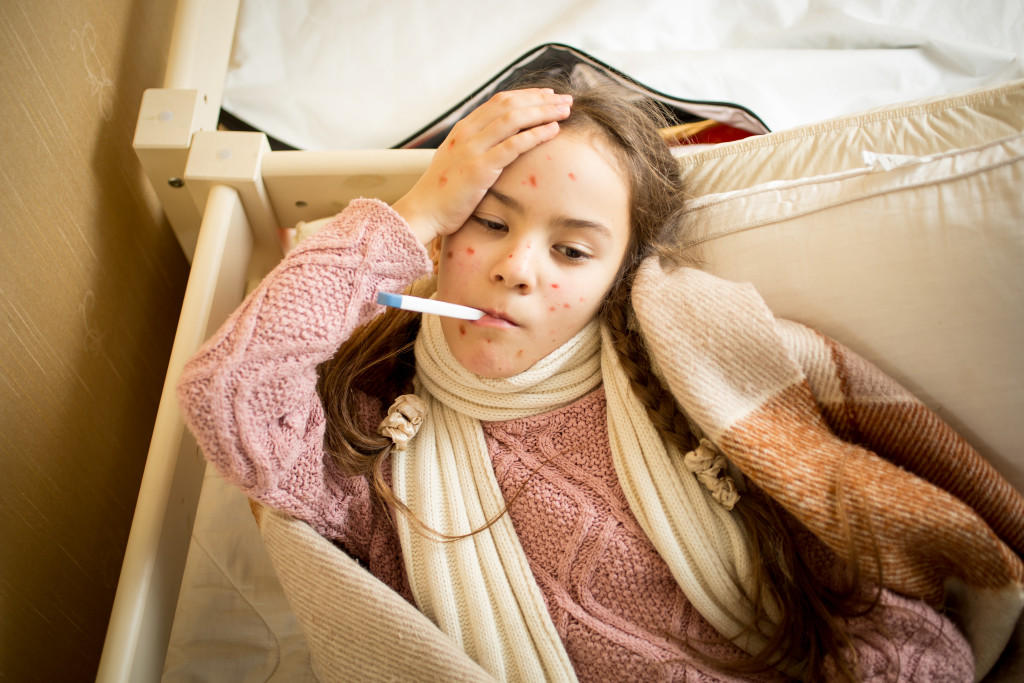- Children’s rash often results from allergies, infections, heat, irritants, or skin conditions like eczema.
- Allergic reactions can be caused by food, chemicals, fabrics, and even yard particles such as pollen.
- Practicing good hygiene, like regular washing of bedding and clothing, can prevent rashes caused by infections.
- Regular moisturizing and using hypoallergenic products help prevent rashes and manage conditions like eczema.
- Early identification of skin changes can aid in swiftly and accurately treating rashes.
Parents always want the best for their children- including their skin. Rashes in children are quite common and can be alarming at times. These rashes can be caused by several things- from environmental factors to allergies and skin conditions. Though most rashes are harmless, some can be severe and need urgent medical attention. Here’s what you need to know about rashes among children, while they happen, and ways to prevent them.
What Are Rashes?
A rash is a change in the skin’s color or texture that usually appears as an area of redness, bumps, and scaling. Common rashes include eczema, psoriasis, contact dermatitis, and ringworm.
What Causes Rashes In Children?
Various reasons can cause rashes. Here are some of them:

1. Allergies
Children are more susceptible to allergies than adults, primarily because their immune systems have not yet fully developed. Allergic reactions in children can be caused by anything ranging from food, chemicals, and fabrics. When your child comes into contact with something they are allergic to, their immune system’s response can cause skin rash. In some cases, these rashes can be accompanied by other symptoms like coughing, swelling of the face or mouth, vomiting, or difficulty breathing. Identifying the allergen and avoiding exposing your child to it is essential.
2. Infections
Bacterial, viral, and fungal infections can cause rashes in children. Some common skin infections that can cause rashes include impetigo, chickenpox, and ringworm. These infections are highly contagious, so you must watch for any symptoms and consult your doctor immediately if you notice anything unusual.
3. Eczema
Eczema is a skin condition that commonly affects children. Dry, itchy, and red patches of skin characterize it. The cause of eczema is not yet known, but experts believe it may be related to genetic and environmental factors. It is important to moisturize your child’s skin regularly and consult a doctor if they develop eczema.
4. Heat Rash
Prickly heat is caused when the sweat ducts become blocked and irritated. Heat rash typically appears as small red bumps and can be very itchy. To prevent heat rash, dress your child in lightweight, breathable clothing and keep them cool and well-ventilated.
5. Chemical Irritants
Chemical irritants like soaps, laundry detergents, and fabric softeners can cause rashes in some children. If you are using a new product on your child’s skin or clothes and begin to notice a rash, consider discontinuing that product.
Ways to Prevent Rashes Among Children
Rashes are uncomfortable and often alarming, so here are some tips to prevent them from occurring:

1. Avoid Exposure To Allergens
If your child has allergies, you must be aware of what triggers the reaction and take steps to avoid exposure. If you are unsure about what your child is allergic to, consult an allergist for testing and advice on managing the condition best.
2. Maintain Your Yard
Your yard can be a source of potential allergens for your child. Weeds, pollen, and molds can cause allergies in some cases. Maintain your yard by cutting grass regularly, clearing weeds, and raking leaves away to reduce the chances of exposure. If you don’t have the time for this, consider hiring local landscaping companies to help you. They can also help you identify and address potential sources of allergens.
3. Keep Bedding and Clothing Clean
Bedding and clothing can carry different types of bacteria, viruses, and fungi, which may cause infection in children. Wash your child’s bedding regularly with hot water to reduce their chances of contact with these organisms. Also, use mild detergents and fabric softeners, as harsh ones can irritate your child’s skin.
4. Moisturize Regularly
Regular moisturizing of your child’s skin is essential for preventing rashes. Use fragrance-free, hypoallergenic products suitable for your child’s age group and skin type. It is also important to keep your child from extreme cold or hot temperatures.
5. Monitor Your Child’s Skin
Monitoring your child’s skin regularly can help you identify any signs of a rash early on. If you notice any changes in the color or texture of their skin, consult a doctor immediately for proper treatment and diagnosis. The sooner you identify the cause of the rash, the better you can manage it.
These are essential tips to remember when preventing rashes among children. With a little caution and effort, you can help your child avoid any uncomfortable or dangerous skin conditions. If something looks unusual or is causing discomfort, contact a doctor or health expert for proper diagnosis and treatment.

